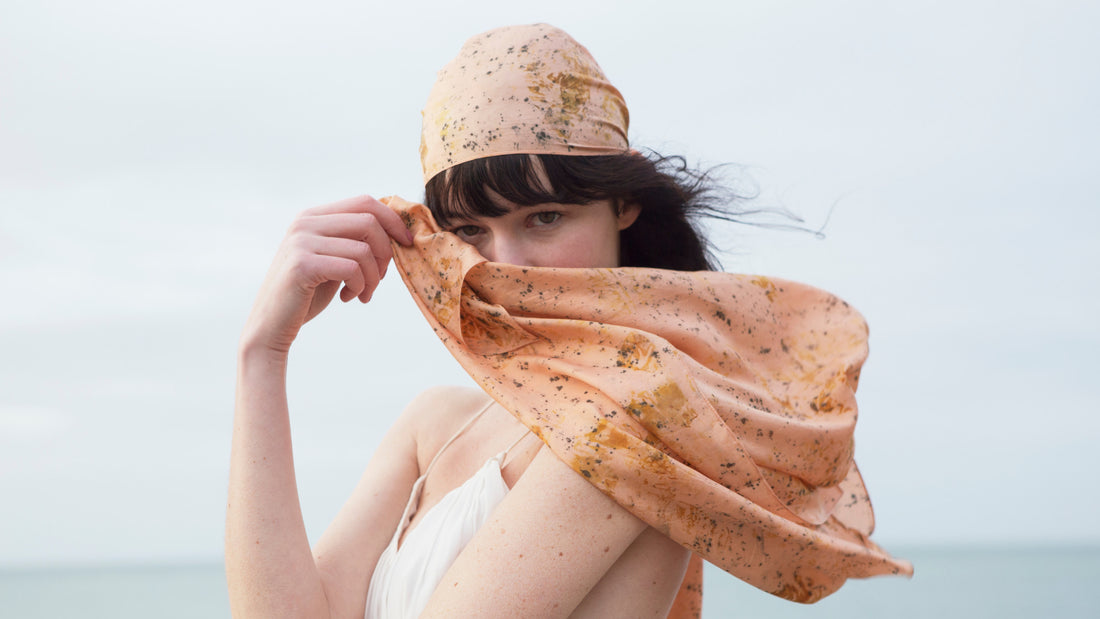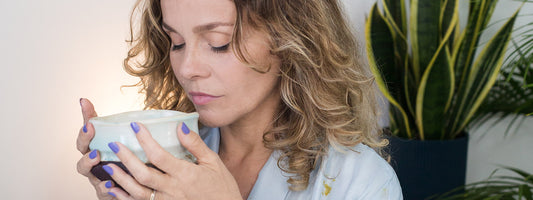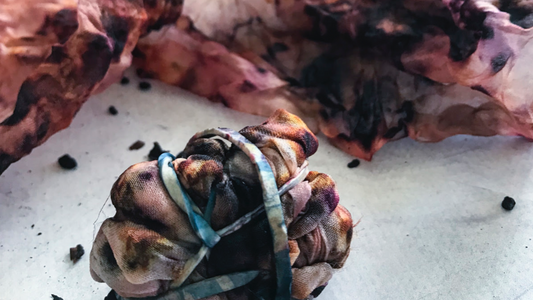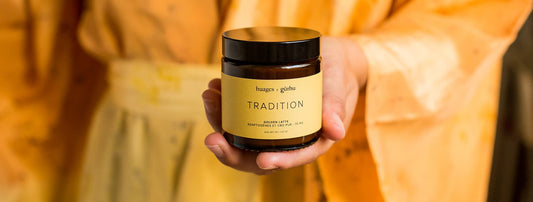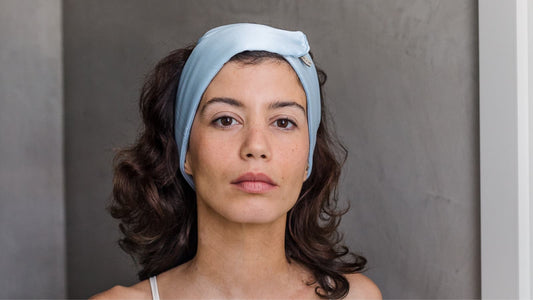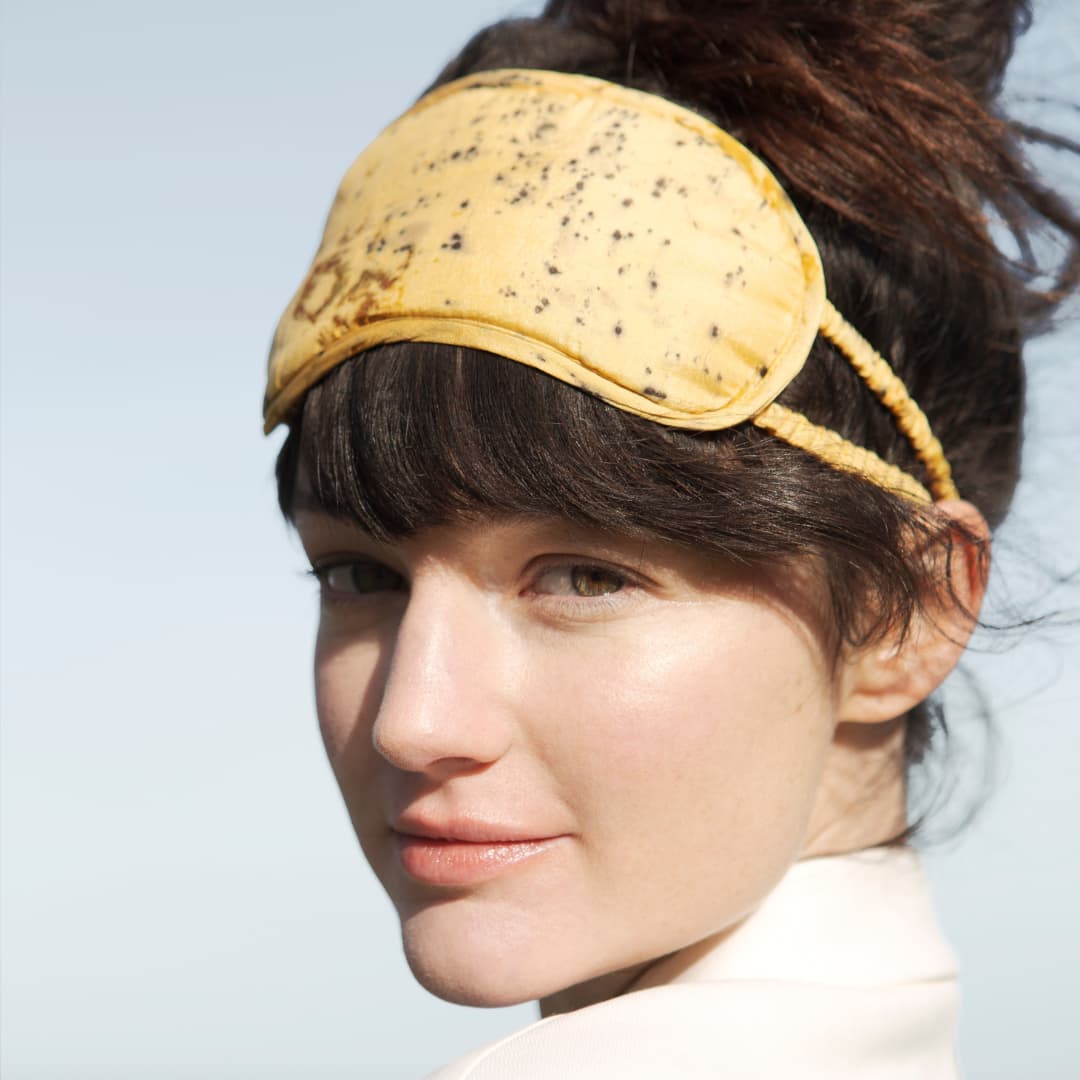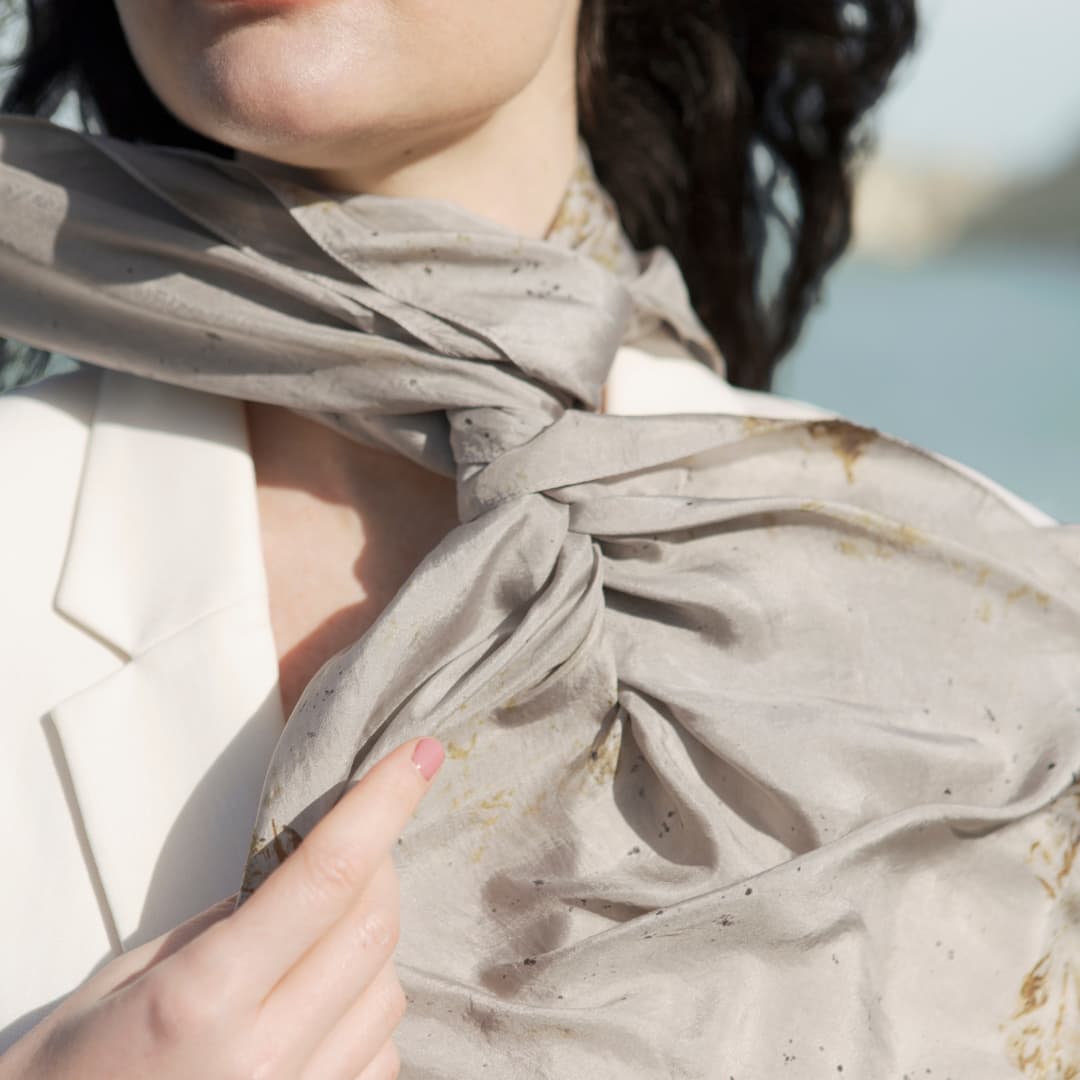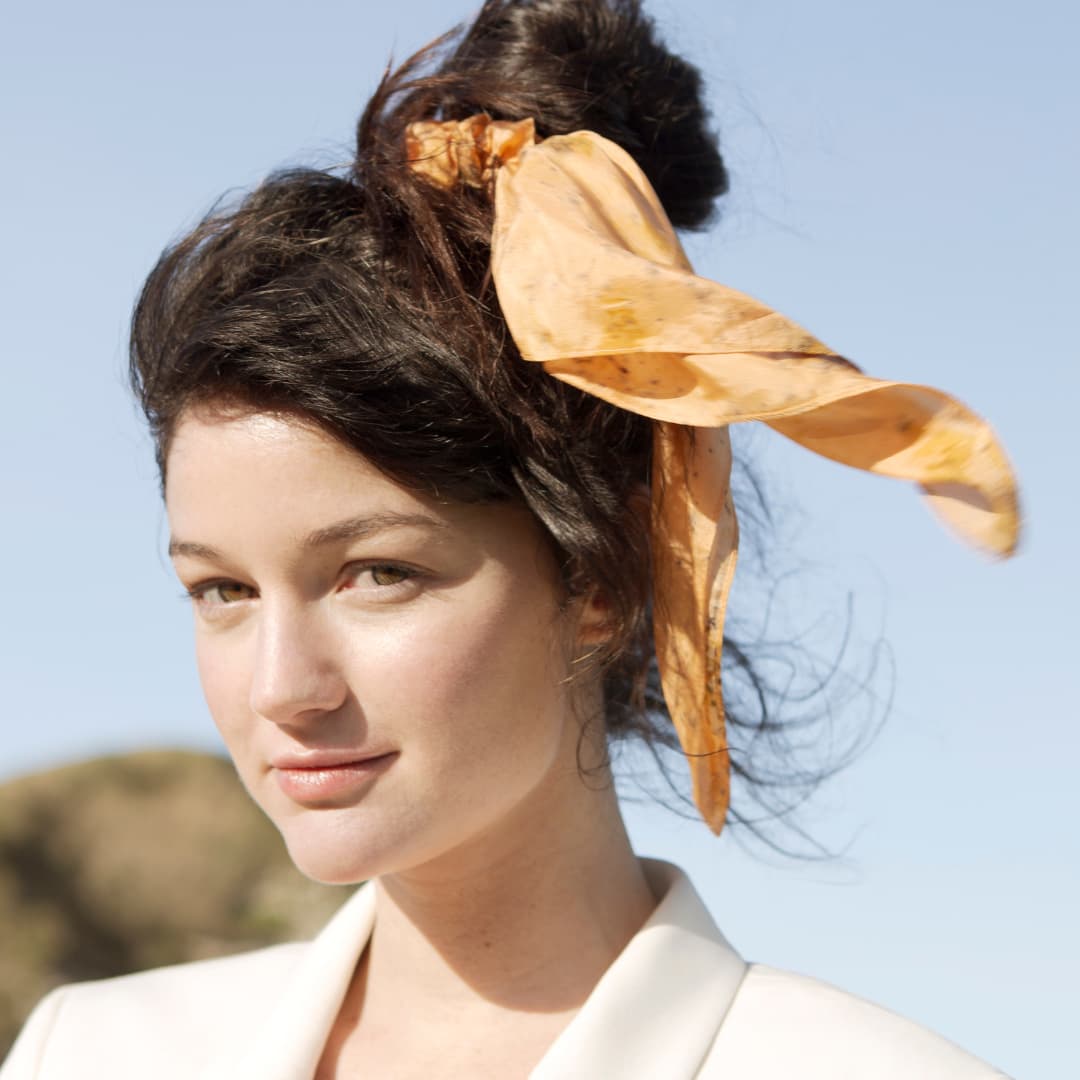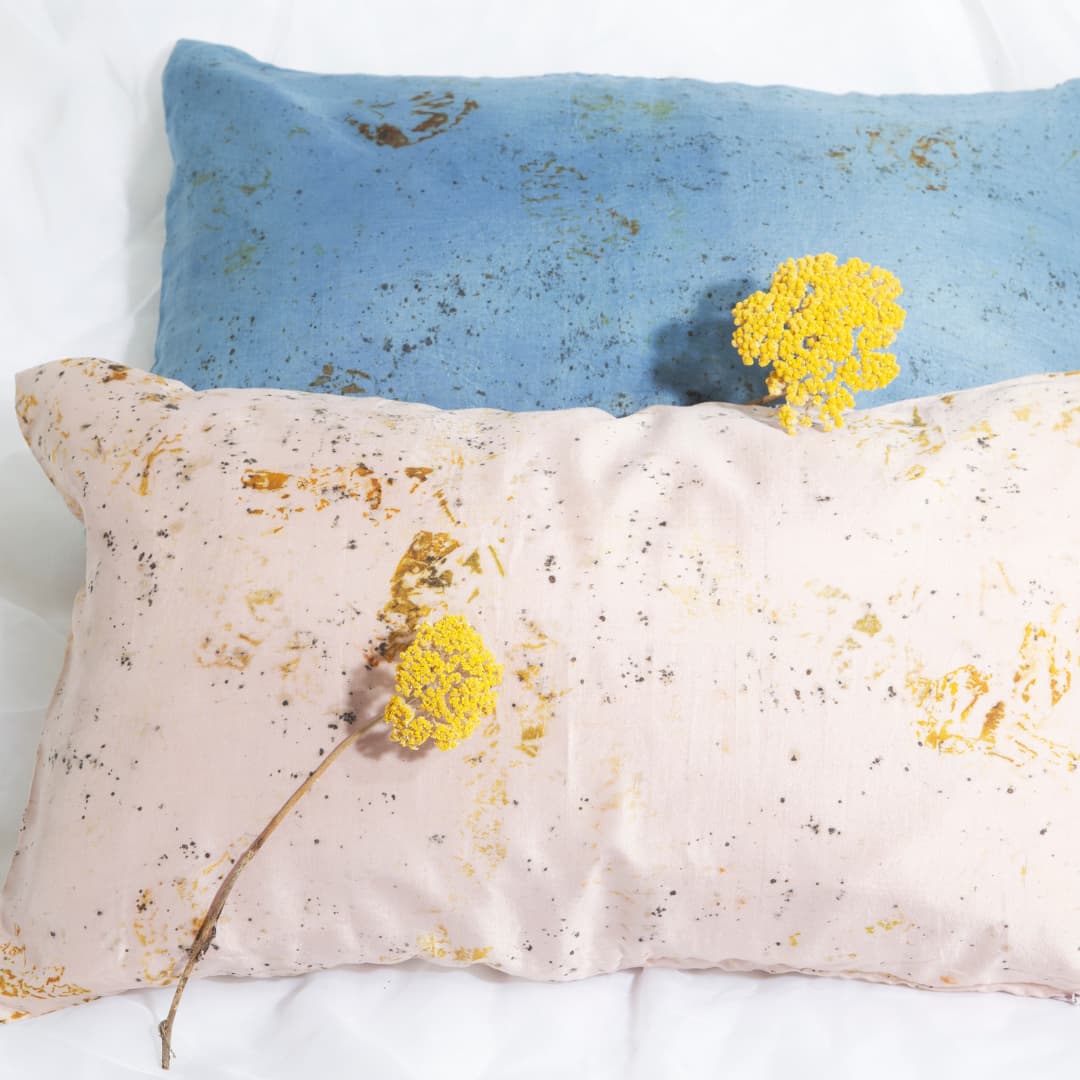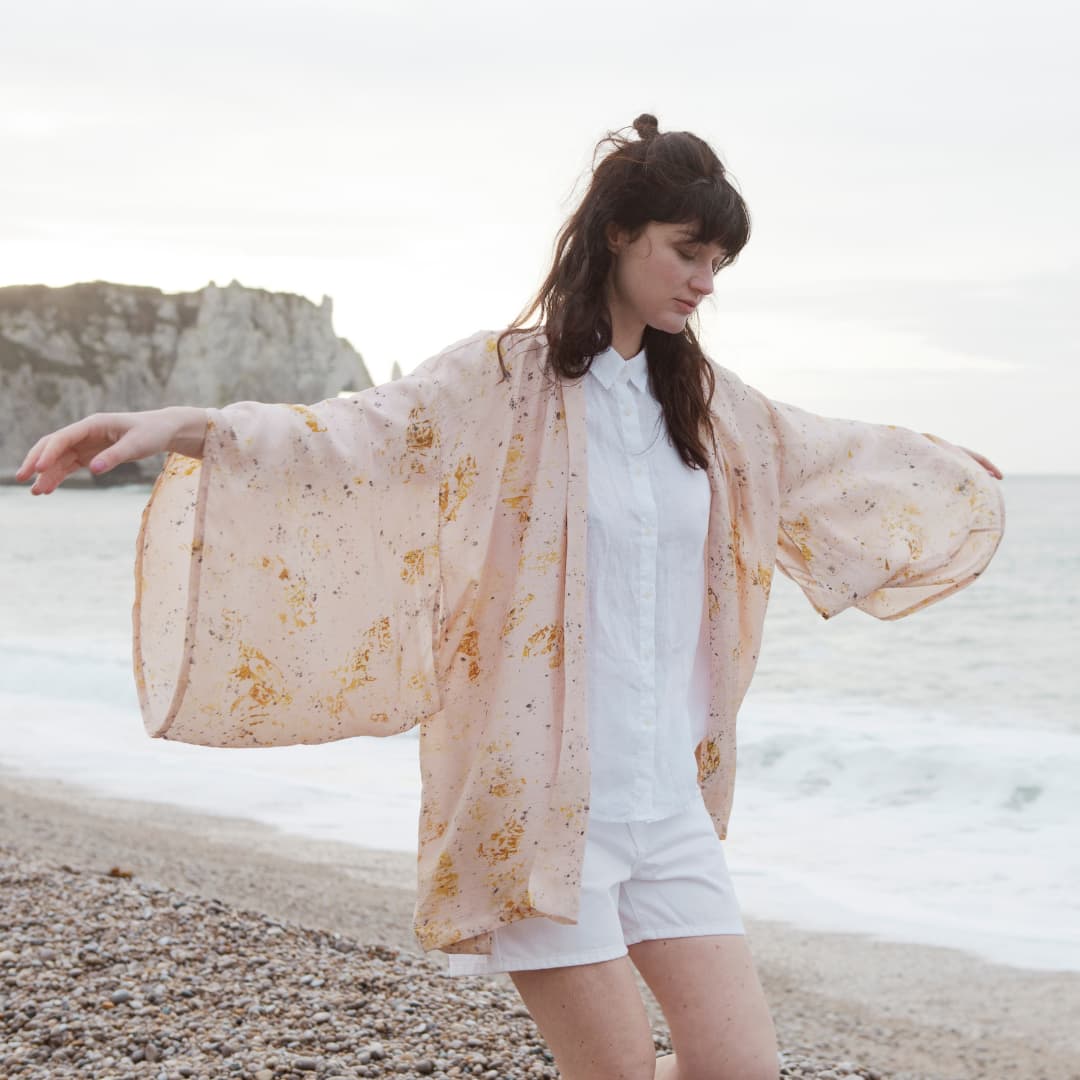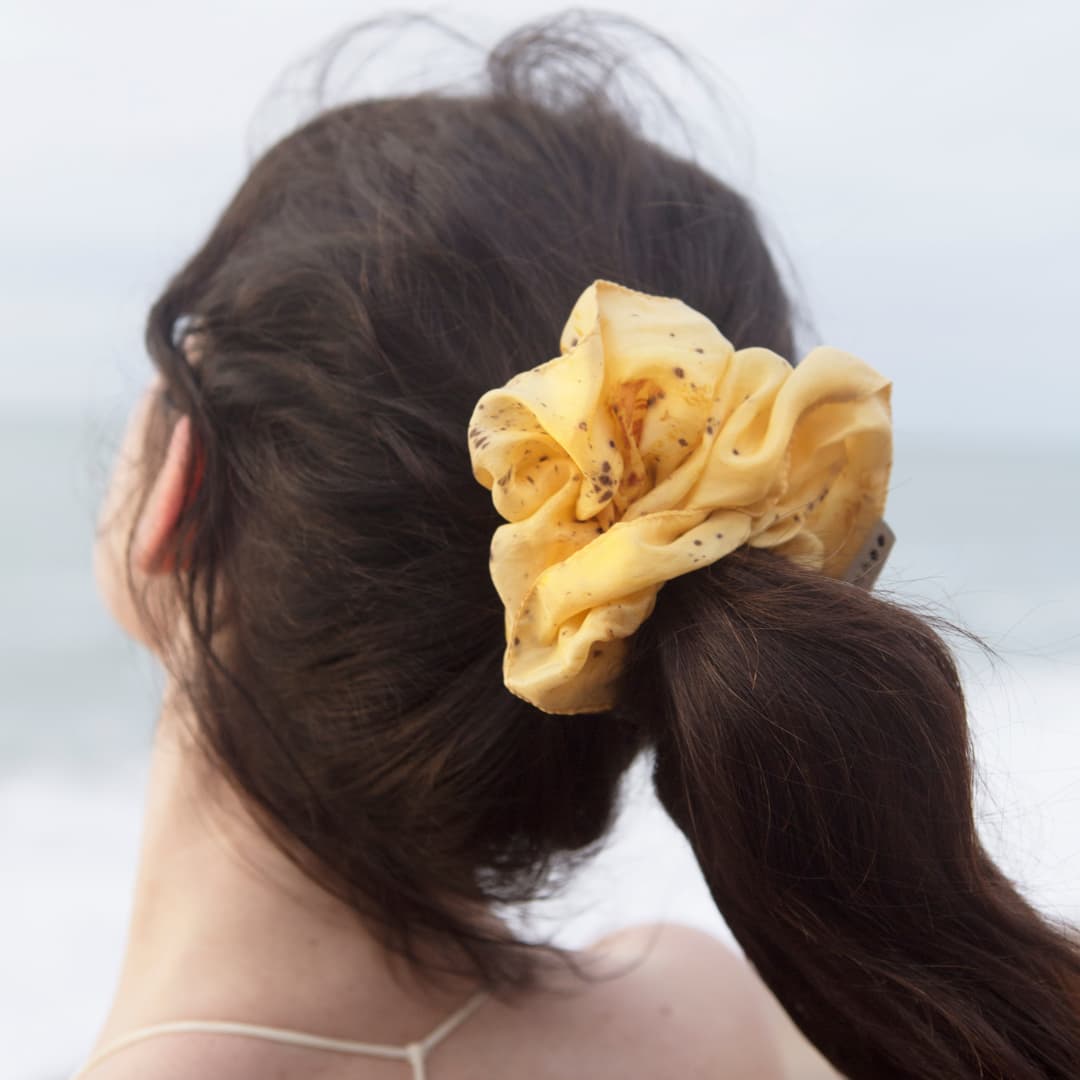Are you looking for a silk scarf for your hair ? The silk scarf is indeed a true beauty ally with protective and restorative properties recognized for centuries. Coveted for its exceptional drape and incomparable luster, silk is also an excellent accessory to take care of your hair. But do you know why the silk scarf is good for the hair and how to choose it? Nimboo explains in this article the secrets of the most precious stole in the world.
The benefits of silk scarf for hair
Tied around the face like Audrey Hepburn, in a turban, a tiara, or a scarf, the silk scarf is a fashion accessory that has conquered all cultures. Suitable for all hair types, straight, curly, curly or frizzy, the silk scarf strengthens your hair fiber while bringing a touch of elegance to your outfit.
What is silk?
Silk is an organic fiber produced naturally by the silkworm to form its cocoon. It is a filamentous slime filled with hypoallergenic, antibacterial and antifungal properties which allows the caterpillar to thrive in a healthy environment.
Discovered in Asia between 2,000 and 3,000 years before our era, silk is at the origin of the most precious fabrics. The silk filament being particularly fine and resistant, it is rolled up with others to form a more or less coarse thread (the titration) which will then be used for weaving. This characteristic of silk to be both fine and solid and its thermoregulatory capacity allow the development of very varied fabrics:
- • silk gauze , silk organza and chiffon are often used for the design of scarves, as they are very light and vaporous;
- • Habotai silk , silk crepe de chine and silk satin are thicker, generally intended for making clothing items or household linens.
Why is silk good for the hair?
Silk is a material originally intended to protect the animal during its earliest stage of development. This is essentially composed of fibroin, a natural protein fiber rich in amino acids. Silk protein is now a recognized component in the world of cosmetics, as it stimulates the formation of collagen, preserves the hydration of hair and skin and promotes the production of keratin. Its exceptional faculties come from its high content of alanine, glycine and serine which gives its fabrics its incomparable softness.
Silk is therefore the ally of healthy hair, it limits breakage, frizz and hair loss thanks to its protective and regenerating envelope. Isn't the magnificent hair of Indian women often covered with a silk stole ? The silk scarf for curly hair is also a popular accessory, it helps to form perfect curls and prevents split ends.
Many shampoos and hair care products for dry or damaged hair include silk proteins in their recipe for their high softening and moisturizing power. Hair silk scarf works the same way, but with a higher amino acid content. It is therefore indicated to strengthen repair treatments and protect the hair from external aggressions.

Why sleep with a silk scarf?
Silk sleeping caps have come back into fashion in recent years, as they help to avoid friction with the pillow and unsightly frizz. Since silk is a very resistant and crease-resistant material, it is also quite possible to substitute the silk bonnet for a large silk scarf tied around the head.
Most of the time, bed linen is made of cotton or a mixture of cotton and artificial materials that catch the hair and dry it out. In the morning, it is not uncommon to see a dozen hairs covering your pillow. Sleeping with a silk scarf on your hair helps to maintain the hydration of the hair fiber, to limit hair loss, breakage, and to bring optimal comfort to your nights.
Thermoregulator, the silk hair scarf keeps you warm in winter and is light and low in heat in summer. It is also not very absorbent, which allows you to keep all the benefits of your hair care during your hours of sleep.

Satin or silk, what type of scarf for the hair?
The satin scarf and the silk scarf do not necessarily designate the same accessory, but some brands take advantage of this confusion to increase the perceived value of their textiles.
Choosing the right hair scarf
Wearing a satin scarf over your hair at night is not necessarily indicated, as satin is not always made from silk. Satin is a type of weaving that limits the crossing of the threads in order to obtain a smoother and more reflective finish. It is therefore possible to find viscose or polyester satin scarves on the market, which are generally very economical, but also extremely polluting and devoid of the natural properties of silk. Among these scarves, the artificial silk scarf (rayon), is not indicated for the hair, they are often electrostatic and impregnated with chemical treatments.
Real silk hair squares are made with mulberry silk or wild silk. These two types of silk have differences because they come from silkworms of related species. Wild silk has a more matte appearance, it is thick and has “pimples” while mulberry silk is softer, smooth and shiny. The mulberry silk scarf is excellent for the hair , it is particularly delicate and its amino acids are easily absorbed by the hair fiber.
Curly, curly or frizzy hair being drier than straight hair, it is advisable to wrap it regularly in a large silk scarf in order to deeply rehydrate it. A true fashion accessory, the silk scarf for Afro hair is also worn day and night, as it brightens up outfits and elegantly emphasizes the wearing of the head.

How to put a silk scarf in the hair?
Silk headband , tiara, silk turban, bonnet, silk scarf darling … the possibilities are endless! There are endless tutorials online that explain the different ways to tie a silk scarf over your hair . Colourful, light and very flexible, the silk hair scarf fits all hairstyles, from the most classic and glamorous to the most exotic and creative:
- • as a crown on loose hair;
- • as a headband with a bun or a ponytail;
- • tied on the head in a 1950s style;
- • around the face like old Hollywood stars;
- • in a turban to wrap all your hair…
We recommend in all cases to opt for a 100% natural silk scarf , preferably ecological, in order to keep all the benefits of this exceptional material.
Nimboo, creator of eco-friendly mulberry silk scarves
The mulberry silkworm is reared in specific sericultures to control its feeding and reproduction. The Bombyx mori is indeed a species created by man over the centuries and which cannot live in the wild. Originally from Asia, these manufacturers are still widely present today in China, India, Korea and Japan.
Unfortunately, this know-how, which used to be artisanal, has gradually been replaced by large-scale industrial production, polluting and disrespectful of the well-being of workers and animals alike. Of course, the quality of the silk suffers.
Although ecological sericulture has emerged in recent years, the fact remains that silk is often subjected to synthetic dyes and treated with chemical fixatives. Over the course of its transformation, it loses its purity and its cosmetic and aesthetic characteristics are impoverished.
Yet, for centuries, there have been ethical and responsible sericulture in some remote parts of India that have their origins in an ancient Jainist and Buddhist culture. These silk factories are maintained by women who raise the silkworms without killing them as required by traditional breeding. Once separated from the chenille, the raw silk is cleaned with organic soaps, then milled and spun to create threads of pure silk called peace silk.
It is with this “ silk peace ” that we make our silk hair scarves . These are handcrafted on a wooden loom that continues the tradition of Khadi. Then dyed with organic dyes that we make from fruits and flowers thrown around Hindu temples, our silk scarves are free of all chemical substances.
Anti-breakage, anti-frizz, anti-hair loss, hypoallergenic, anti-mite and antifungal, our ecological and ethical silk hair scarves are based on a circular and solidarity economy. The craftswomen behind these pieces are paid fairly and enjoy full recognition for their work. Inspired by the magnificent scarves of Indian saris, our silk scarves constitute an ancestral heritage resolutely turned towards the future.

